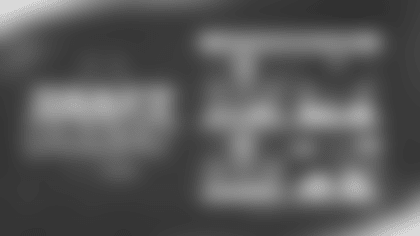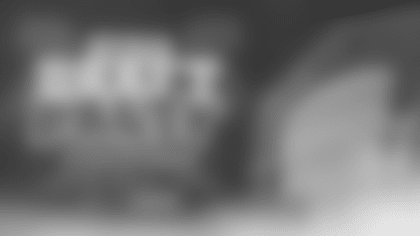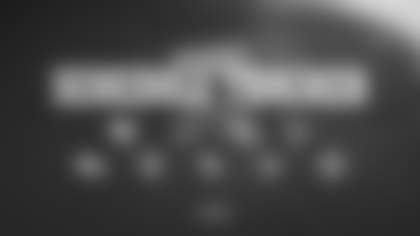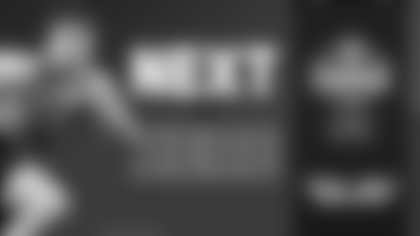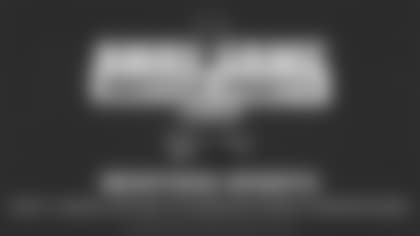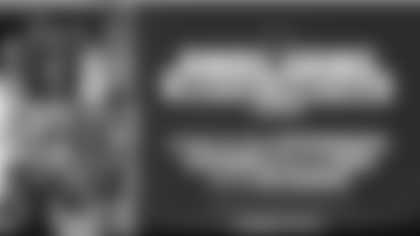Week 11, Colts at Patriots
Bill Polian, in his 13th season as Colts president, has a resume unique in the NFL. The only man to win NFL Executive of the Year six times, Polian in the 1980s built the Buffalo Bills into a four-time Super Bowl participant. In the mid-1990s, he built the expansion Carolina Panthers into a team that made the NFC Championship Game in its second season, 1996. Since joining Indianapolis in 1998, he built the Colts from a 3-13 team in 1997 and 1998 into one that has made the playoffs 10 of the last 11 seasons, including AFC Championship Game appearances after the 2003, 2006 and 2009 seasons, AFC South titles in 2003, 2004, 2005, 2006, 2007 and 2009, Super Bowl appearances following the 2006 and 2009 seasons and a Super Bowl championship following the 2006 season. Each week during the season, in The Polian Corner, Polian and Colts.com will discuss issues pertinent to the Colts and the rest of the NFL.
Q: A 23-17 victory over the Cincinnati Bengals on Sunday. A lot of starters were out and a lot of guys stepped up. What did you see?
A: They did a great job. I counted 10 starters who were out. People don't count the guys who are already on injured reserve, so Melvin Bullitt and Dallas Clark and Bob Sanders (not on IR) were out as well. It was a great job by all concerned, especially the young players. Kudos to the coaches and the veteran players for keeping their cool, staying focused and playing hard and playing through what is as difficult a stretch as any I've ever experienced in my time in professional football. I really, really take my hat off to them. It was, in many ways, an uneven performance, particularly offensively, but nonetheless a winning performance and one we certainly can build upon.
Q: When you have a lineup with a lot of inexperienced players on offense, how do you handle it? Do you pull the game plan back at all?
A: We went in there and said, 'Hey, we're going to do what we do,' so you have to be up to speed. Now, there are some things you take out. You don't build everything around every position as you would if the veteran player were in there, but by and large, everything has been pretty much what it would be if the starters were in there. It's a tough load for them to pick up and carry, but we did it pretty well.
Q: The offense faced tough field position much of the game . . .
A: We punted the ball much more than we're used to doing. That's a function of the fact that we didn't play as efficiently as we're used to playing on offense. But that said, we didn't turn the ball over, and in the end, when you play good defense and you play field position, which people are not used to seeing from us, you still win football games. That's the lesson that can be learned from that: Play good defense, make the other team turn it over, you don't turn it over, win the battle of the field position because you do a great job punting the ball – as Pat (McAfee) did – and a great job covering it as we did, and you're going to win most football games. That's what occurred Sunday,
Q: When the Colts don't turn the ball over they're 28-0 in recent games . . .
A: It's huge in every game. When we're cooking on all cylinders offensively and we have everybody in there and can make plays all over the field, you might be able to survive one or two turnovers, but if you lose the turnover battle, the odds are pretty darned good you're going to lose the football game. As I say, our fans are not used to seeing us play this kind of a close-to-the-vest kind of game. It might not have been that had it not been for the fake punt. The game could have opened up at that point, but it didn't and we had to stay focused and keep playing it close to the vest. We did and won the football game. There is more than one way to skin a cat, and certainly more than one way our fans are used to seeing us play.
Q: Robert Mathis and Dwight Freeney each had a sack on the final possession and people say, 'Why didn't the Colts do that earlier?' The Bengals didn't allow it earlier . . .
A: The Bengals were keeping two people on Robert and Dwight virtually all day until the end when they had to release them and we were able to make plays. It's tough to beat double teaming constantly. Other people have to step up and we got some really good work from Mookie (defensive tackle Antonio Johnson) and Rico (defensive tackle Ricardo Matthews) and people like that inside. (Defensive tackle Eric) Foster did a nice job inside. Those opportunities are going to present themselves and both Freeney and Mathis did a terrific job of keeping the pressure on coming through the double-teams, but it's tough to beat them and get clean. The proof was in the pudding. When they did get clean, it was two sacks back to back.
Q: And except for the 42-yard run on the fake punt, the Bengals averaged a yard and a half a carry rushing . . .
A: We did a tremendous job against the run. Our linebackers did a great job. Our front did a great job. (Safeties) Aaron Francisco and (Antoine) Bethea did a great job. Our corners did a great job because we were in zone a lot of the time. We had a phenomenal day against the run, and that's a team that can run the ball and run it well. Cedric Benson is a good back. Bernard Scott's a good back. We did a phenomenal job there and it proves if you play good defense and you don't turn the ball over, the odds are pretty good you're going to have a chance to win most football games.
Q: Cornerback Jerraud Powers did a good job blocking for Kelvin Hayden on Hayden's interception return for a touchdown . . .
A: He had a good block there that sprung Kelvin the whole way. We're used to seeing Kelvin return picks for touchdowns and it's a great thing. It really is. I couldn't feel better for a player than I do for Kelvin, because he has gone through a difficult transition changing from a pure Cover 2 corner to what we do now and it has been rough for him in certain spots. There are things we do that don't exactly fit his talent. He has fought through it and persevered, and it's great to see him have success. He's a really good guy and a good player.
Q: Why is a touchdown run back from five yards deep in the end zone referred to as a 105-yard touchdown and a touchdown pass thrown five yards into the end zone from the 30-yard line a 30-yard touchdown pass?
A: You're guess is as good as mine. I do not have any understanding as to how the stat mavens at (the) Elias Sports Bureau figure these things out. That's who does it. They are the be-all and end-all of statistics in the National Football League. I couldn't figure out how the Cincinnati quarterback (Carson Palmer) who threw two touchdown passes and three interceptions had a higher quarterback rating than Peyton Manning, who threw no interceptions. You'd have to ask (the) Elias Sports Bureau. I'll leave that to you, because I get confused every time I speak with them.
Q: What did you see on the onside kick at the end of the game and Tyjuan Hagler's interception return?
A: On the Carson Palmer (interception return), the official is going to have to rule in that case – since it was ruled a touchdown on the field – that there's indisputable visual evidence to overturn. I did not think it was indisputable, but it was pretty clear that it was close. That one you wouldn't necessarily argue with. Did he adhere to the letter of the law? Probably not, but the officials are human and they have to make that judgment. There certainly was enough evidence there to say, 'A equals B equals C.' He either tripped over the leg or he stumbled. You can draw whatever conclusion you want, and I'm putting no pejorative connotation on that. I don't think it was a leg whip. It didn't constitute that. There wasn't enough action on the part of the leg to constitute a leg whip, in my opinion. In order to have a foul, you have to have a fair amount of overt action, and there wasn't any there. Now, the onside kick is an interesting play, and it's one that needs to be spoken about. They told (Colts Head Coach) Jim (Caldwell) correctly by the letter of the law that it was non-reviewable, because they were not sure that he (Colts wide receiver Pierre Garcon) had possession. Now, you come into Catch-22. It's non-reviewable because they weren't sure he had possession, so how do you determine if he had possession? Well, you review it. That one needs to be spoken about with the Competition Committee as to whether or not we ought to address that situation. Possession can be determined in other situations, particularly scoring plays. Why would you not want to do it in that situation that affects the game so dramatically. But having said that, I always have been a proponent of as little replay as possible, feeling it is very intrusive on the game. I think it's fair to say an overwhelming majority of NFL football people would not want the college system where there is a review of every play and the eye in the sky is breaking up the game. Had the Competition Committee proposed that when this replay system came into being it would not have passed. We would not have replay in the National Football League today. There are people who I respect like (former Vice President of Officiating) Mike Pereira who disagree, but that was the overwhelming sentiment in the league. That's Catch-22. The other issue, which troubles me even more, is how are we going to officiate those kinds of situations? Are we going to have a scrum in there? Or are we going to get in there and officiate and try to determine who has the ball as quickly as possible? Again, this is no criticism of the officials. They did the best they could under the circumstance and they were correct to say that by rule it could not be reviewed, but I think we need to look at the whole thing – both the context of whether or nor possession and down by contact can be determined on replay and/or whether or not we have to get in there and break those scrums up more quickly when they occur. The spirit of the rule is not to kick an onside kick and then have a melee and whoever comes out with the ball . . . it isn't rugby. Or at least, in my view, it shouldn't be. Now, maybe there are people who feel differently. We certainly need to discuss it.
Q: Is there a policy that dictates balls that go into the stands must be returned? And if not, why does security always ask for the ball back?
A: There is a general policy that you'd like to have the ball back. People tend to fight over the ball and you end up with a scrum in the stands and people generally not feeling good about what occurs. That's why the nets are behind the goalposts. We have plenty of footballs. It's not the footballs that we worry about. It's the fans we worry about. There were numerous instances of people fighting over balls when the goalpost nets did not exist. As a league we decided it best to keep the balls in the field of play.
Q: Can you explain what happened on the fake punt Sunday when Bengals running back Brian Leonard gained 42 yards for a first down?
A: A lot of what happens in football in general and in the National Football League goes unexplained until after the fact because with 22 people on the field and all the action that takes place it's pretty hard for the naked eye to follow. Here's what occurred. They sent personnel on the field that spoke to a fake punt. They had about three-quarters of a yard to go. We sent our punt team on with instructions to play for the fake punt. We got aligned incorrectly and left a gap uncovered through which Brian Leonard ran. We were prepared for the play. We knew it was coming. We had the right personnel on the field. We just didn't execute the way we were supposed to. More power to them for doing it. That's exactly what occurred. There was no surprise. We were in a defense we thought could handle it. We didn't execute the defense properly simply because we didn't align properly. That's going to happen. Those things happen due to pressure and time constraints. They made a good play and we didn't.
Q: Can you talk a little about how the NFL is handling concussions now? Are there more than there once were, and what's the best way to address the issue?
A: First of all, the diagnosis and reporting of concussions is better, more thorough and more complete than it ever has been in the history of football. If you try to measure concussions from this year back four years, let's say, you will find a huge disparity in the numbers. That's simply a function of diagnosis and an expansion of diagnosis, and perhaps even expansion of the definition of concussion. That's one thing to remember. Second of all, helmet-to-helmet contact is a very complicated issue. It does not lend itself easily to 15-second sound bytes. There are many 15-second sound bytes on helmet-to-helmet contact which say to nothing with respect to either the rule or the severity of the contact. The bedrock of the whole issue is, 'What is it that we're trying to measure here?' What we're trying to measure here is concussions, and that is being done better than it ever has been done before. While the statistics have validity, they have no historical relationship. There's nothing to measure them against. You've been measuring one thing prior and another thing today. In terms of the rule, the colleges have a rule that essentially boils down to the phrase, 'Targeting the head.' In our league, you may not have helmet-to-helmet contact with a defenseless player. I won't get into the definition of, 'defenseless player,' because it's rather complex, but it has been expanded in the past year to include a player who in fact has caught a pass but who has not established full ability to protect himself from a blow. Violation of that rule is being penalized on the field aggressively. They are being fined after the fact by the league office. The hit that injured (Colts wide receiver) Austin Collie (against Philadelphia on November 7) was penalized on the field and not fined, and that was the correct call in my view. The most important thing was it was the correct call in (NFL) Commissioner (Roger) Goodell's view. I have heard of a so-called protective cap that goes over the helmet. In the time that I was around it and having a player use it, it was called, 'Pro Cap.' It was used by a player in Buffalo named Mark Kelso, with whom I spoke on Saturday. He reminded me that he used it for five years and had only one concussion while using it after he had had four concussions prior to using it. The doctor had essentially said, 'You can't play anymore.' He went to this device and obviously it helped him greatly extend his career. He's a very bright guy who went to William & Mary. He's at present actually working on the subject as well as being one of the Bills' broadcasters. He's a high school athletic director and a former high school coach. He's involved with the manufacturer of a very similar device at this point. My personal feeling is that the rules we have established will go a long way both from a medical standpoint in terms of returning players to play safely and from a diagnosis standpoint as well as from a playing standpoint. In the end, you still have the problem of a hard, plastic helmet hitting another hard, plastic helmet at very high speeds. That's a problem that you can look at and the solution that Mark Kelso used may well be something that needs to be explored. That's a long-winded explanation of where we are. It clearly is a hot-button issue for the media. It has been a point of emphasis for Commissioner Goodell and for the league office and for the Competition Committee because we want the game to be as safe as we can make it. The answer may lie in improved helmet technology, not just inside but outside as well.
Q: Did you believe Cincinnati wide receiver Terrell Owens quit Sunday? And if so, have you ever seen a player quit to that extent?
A: I don't think it's my responsibility as a club official to evaluate anybody from another team. I'm not going to, but everybody's entitled to their own opinions. Most people watch tape or have the ability to watch tape, and you can watch it and draw your own conclusions. I will say this. There are not many coaches in the National Football League I respect more than (Bengals coach) Marvin Lewis. He's not only a friend, but a guy I really have a lot of respect for and I think he's a heck of a football coach. I can assure you that Marvin teaches every one of his players to go 100 percent all the time.
Q: Can you explain why the NFL allows the play in which coaches call a timeout after the snap on field-goal attempts late in games?
A: There's only one minor discrepancy in what you're seeing and what actually happens. It's a function of the football field being as big as it is with as many people out there running around. According to the rule, coaches are allowed to call timeout on the sideline. In that situation, very frequently the head coach will go up to the nearest official who is standing right next to him on the sideline out of the view of the other six officials and out of your view, and as the ball is just about to be snapped, he will call timeout. The official will acknowledge it, as he is required to by rule. The snap will occur, the kick will occur and it will go up. The fans will cheer or groan depending on what the outcome is, and the official on the sideline will come running in waving his arms saying, 'No, there was no play because the timeout was called before the ball was snapped.' I sympathize completely with you in that it looks terrible. I'm not sure that it's really great for the game. I'm sure there are lots of coaches who would argue the other side of that point. It happens at the Competition Committee every year. Thus far, the coaches have held sway. They want the ability to freeze the kicker, to call the timeout. The reason they want to do it right up until the ball is snapped is the possibility of a fake. They want to be able to react to an offensive team lining up in a fake field-goal situation and then have the ability to call timeout. Is there a common ground between what you consider to be something that isn't great for the game and concern with respect to the fake field goal? I think the answer is yes, and we'll discuss that, I'm sure, as a Competition Committee this winter. What's being done is perfectly legal. The timeout is called out of your view before the ball is snapped.
Q: There was a Cincinnati touchdown called back on Sunday because of a ruling you see a lot in the NFL. Officials ruled that one receiver "covered up" another when lining up before the play. What does that mean and does the offense gain an edge by doing so?
A: I'll explain why they gain the advantage. If a wide receiver is on the line of scrimmage, No. 1, the defense has a difficult time figuring who is eligible and who is not. That's No. 1: you have to know who is eligible and who is not eligible. Second of all, when the receiver is on the line of scrimmage, he gains a blocking advantage if he's coming inside to block on a linebacker or a defensive back. He has at least one and perhaps two steps less to go in order to contact that man. In professional football, that's a huge advantage. That's the reason that rule is in there. It may look nit-picky, but it is not. To identify eligible players is critically important. You don't want to give them an advantage the rules do not allow.
Q: Did the Colts ever considering moving defensive end Robert Mathis to linebacker?
A: We did. We talked about it early in Tony Dungy's time as head coach. It was after Rob's rookie year. We said, 'Would we be better off having Rob at weak linebacker?' In Tony's defense, that player makes a lot of plays and become a really effective player. Tony's answer consisted really of two things. The first was we always believe you should let players do what they do best and not try to make them do things they don't necessarily feel comfortable with, or are not really well-suited to do. The best thing Robert did was rush the passer. That's what he did in college. He dropped some. He was a 3-4 linebacker in college, so he dropped some, but essentially he was a 4-3, stand-up defensive end. To convert him to a side-to-side dropper, or to a chase player and have him take on blocks from fullbacks and things of that nature we didn't think would be utilizing his talents as best we could. Secondly, Tony's defense is predicated on how the game ended Sunday. Turn those guys in the front loose and go rush the passer. Even if they're doubling the outside guys, if the inside guys create pressure we'll get errant throws and we'll get bounce-offs. We'll get interceptions. We'll get wide receivers that don't necessarily want to go in there where the safeties and linebackers live, and we'll get turnovers. Tony said, 'Hey, that's what the defense is predicated on. Let's let Robert be Robert and go rush the passer.' Fortunately over time, the prejudice against smaller defensive ends has vanished. Robert made the Pro Bowl and deservedly so, and he should make it again this year, I would hope. He's had a great career for us. We did discuss it, and that was the outcome of the discussion. As was the case with most things that had to do with defensive football, Tony was right on.
Q: How good are the Patriots?
A: Very good, and most importantly, this game will not decide anything. There is a long way to go in this season. The winner of this game is not guaranteed to go to the Super Bowl, and the loser is not guaranteed to miss the playoffs. It's one game and it's interesting and exciting, but it's only one game with seven to go.




